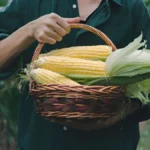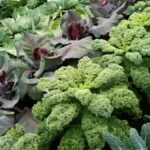How to start a vegetable garden? is a fruitful adventure that encourages a closer bond with nature and provides fresh products. Getting started in gardening may seem difficult to novices, but anyone can grow a healthy vegetable garden if they have the correct information and techniques. Here, we’ll provide six crucial tips on how to start a vegetable garden that will help you create a fruitful and lovely space.
Here, we reveal 6 essential secrets on how to start a vegetable garden for beginners:
1. Selecting the proper site: Matter of light, soil, and space
- The first step towards a successful vegetable garden is choosing the right spot. Vegetables require six to eight hours a day of direct sunlight at the very least. Before selecting a location, note how much sun your yard receives in different parts of the day.
- Soil quality is crucial for vegetable growth. Organic, well-draining soil is ideal for vegetables. A quick soil test can determine the ideal pH range of 6.0-7.0. To increase nutrient content, amend with compost, manure, or organic fertilizers.
- Finally, ensure sufficient space for plants to grow, as crowded plants may need more competition for resources like light, water, and nutrients. Provide plants with space according to their specific requirements, as listed on seed packs or plant tags.
2. Provide your vegetable garden with careful thought
- A flourishing garden requires a carefully thought-out arrangement. First, determine if you have enough area for raised beds, direct-to-ground planting, or container gardening. While container gardens are perfect for patios and balconies, raised beds provide greater drainage and soil control.
- To increase yields and keep pests away from your crops, think about utilizing companion planting strategies when designing your layout. For example, growing basil close to tomatoes enhances their flavor and keeps harmful insects away. In a similar vein, marigolds planted next to crops like beans and carrots can help keep worms away.
- Implementing a crop rotation strategy can maintain soil health by preventing pests and illnesses specific to a vegetable from accumulating. This can be achieved by rotating crops from different plant families annually.
3. Choosing the proper vegetables: Season and climate matter
- To ensure success, determine your hardiness zone, which is based on average yearly temperatures, to select the right vegetables for your growing region, as not every climate is suitable for every vegetable.
- Crops like lettuce, spinach, and peas thrive in cooler weather, while zucchini, tomatoes, and peppers thrive in warm climates. To prevent stunted growth or crop failure, follow the appropriate planting timetable for your area.
- The heirloom variety offers a more flavorful, centuries-old product, and may be more resilient to disease and better suited to the environment compared to hybrids.

4. Effective, deep, and regular watering methods
- Proper irrigation is crucial for a healthy vegetable garden, ensuring water is deeply and infrequently sourced to the roots, preventing issues like bitter cucumbers and tomato blossom-end rot.
- To reduce evaporation and prevent powdery mildew, use a drip irrigation system or soaker hose to directly water the soil. Water plants early in the morning to allow them to absorb moisture before the heat sets in.
- Mulch, like straw or leaf shreds, is essential for garden maintenance, controlling soil temperature, weed suppression, and moisture retention, making the garden healthier and increasing water efficiency.
5. Fertilizing for success: Understand what your plants need
- All plants require nitrogen, phosphorus, and potassium for survival. Potassium improves plant health, phosphorus promotes root and flower growth, and nitrogen stimulates leaf growth.
- Test soil nutrient levels to select appropriate fertilizers, such as compost, manure, and bone meal. For long-term soil health, side-dress plants with compost tea or a balanced organic fertilizer during the growing season.
- Excessive fertilization can cause nutrient imbalances and burn plants. Use slow-release fertilizer and follow container directions for proper nutrient intake.
6. Handling insects and illnesses: Avoid, track, and manage
- Preventing pests and illnesses in vegetable gardens requires careful management. Start by keeping the garden tidy and pest-free. Avoid growing vegetables too close together, as this encourages poor air circulation and promotes fungal infections.
- Regularly inspect plants for pests like aphids, caterpillars, and beetles, which can cause severe damage. Use insecticidal soap, hand-pick, or introduce beneficial insects like lacewings and ladybugs for environmentally friendly pest management.
- Crop rotation, companion planting, dry leaves, mulching, watering plants near bases, and promptly removing damaged plants are crucial preventive measures against diseases, reducing the risk of fungal infections.
Conclusion:
Learning how to start a vegetable garden may be difficult, but by following these six vital principles, you’ll put yourself on track for success. With the appropriate site, careful planning, soil management, adequate watering, and good pest control, your garden will thrive and offer you fresh, home-grown produce.
Certainly! If you’d like to learn more, please consider following our WhatsApp Channel: Harvest Gardening
A frequently asked questions:
Q1: How to start a vegetable garden indoors?
A1: To begin an indoor vegetable garden, select a sunny location, use containers with adequate drainage, and plant vegetables such as herbs, lettuce, or tomatoes in well-drained soil. Ensure that they receive adequate light (supplement with grow lights if necessary) and water consistently.
Q2: What is the best vegetable garden for beginners?
A2: The greatest vegetable garden for beginners comprises plants that are simple to grow, such as lettuce, radishes, tomatoes, and herbs like basil or mint. These vegetables thrive with little effort and are ideal for both indoor and outdoor gardens.
Q3: How to start a vegetable garden in Australia?
A3: Plant veggies that are suited for the season, such as tomatoes, spinach, or carrots, in a sunny spot with well-draining soil if you’re starting a vegetable garden in Australia. Pay attention to the weather in your area and water frequently to ensure wholesome growth.



